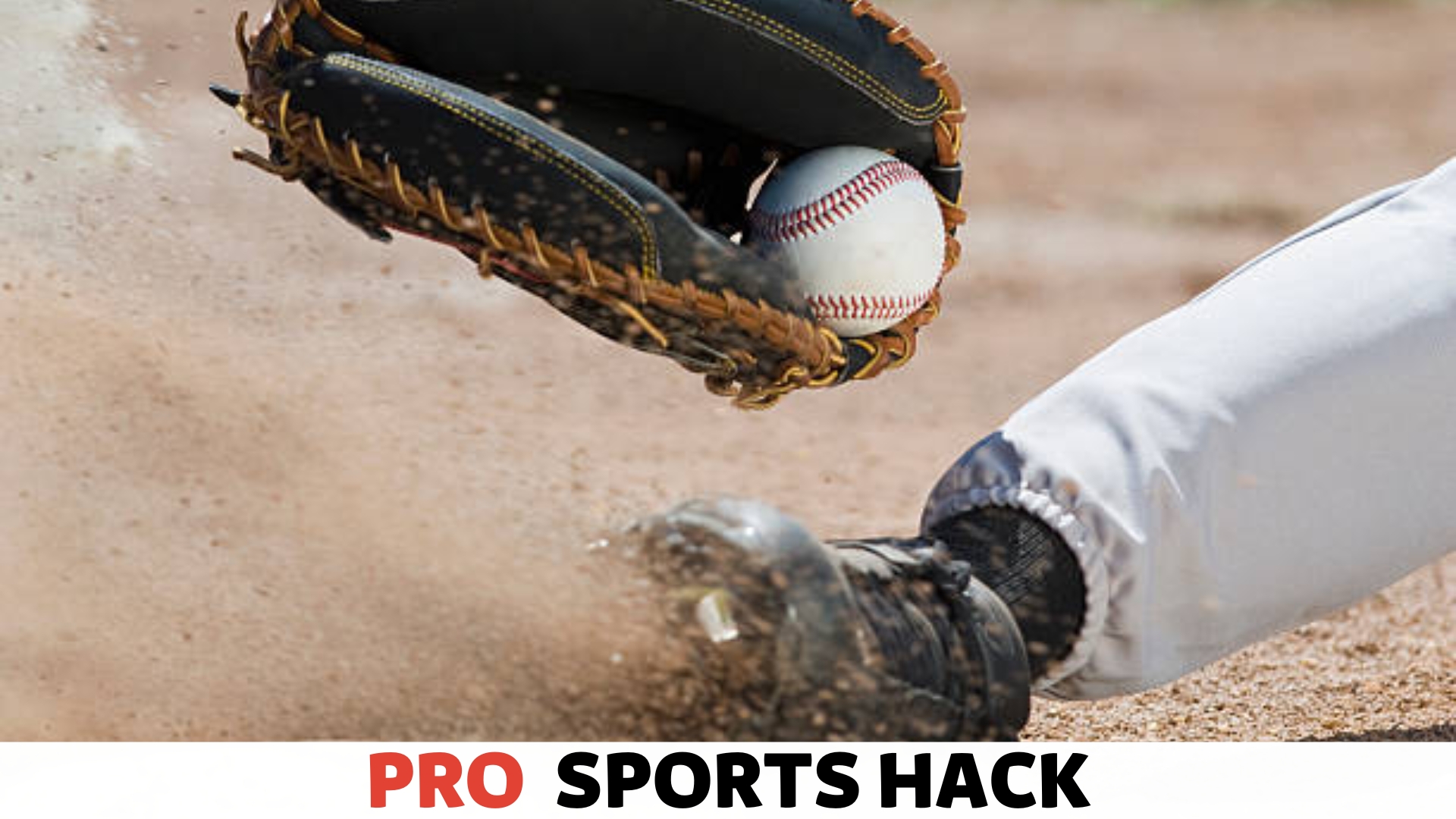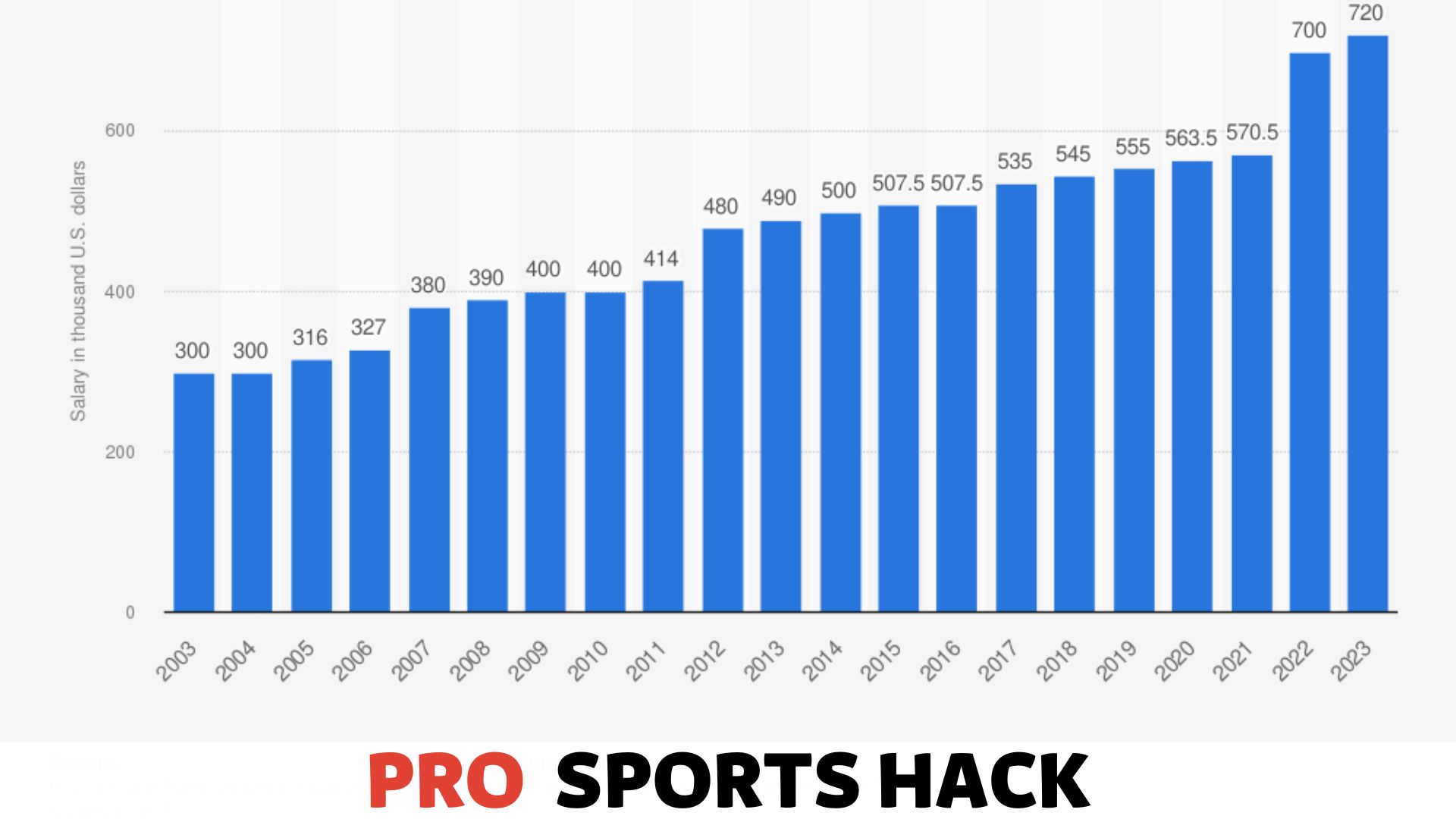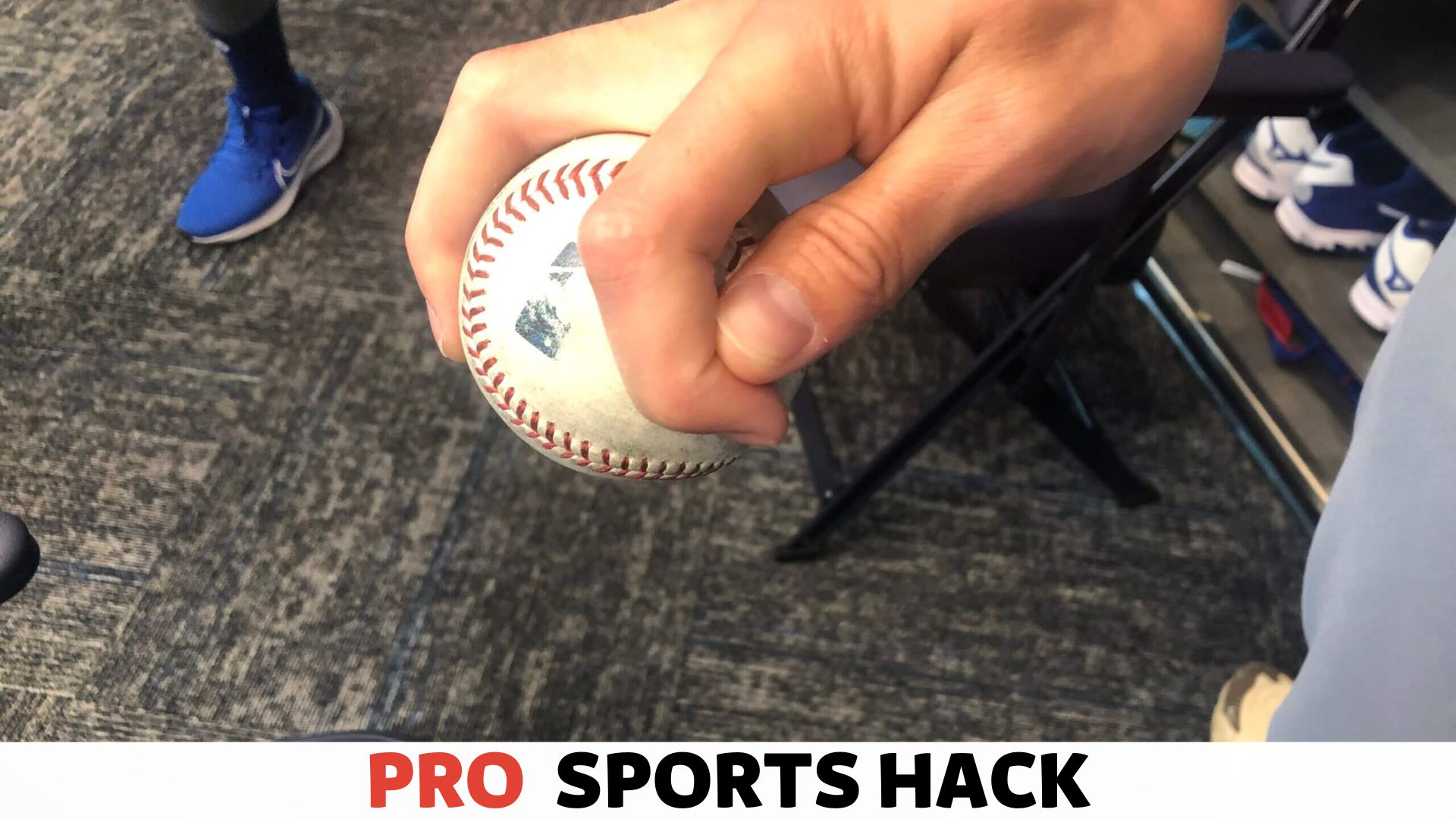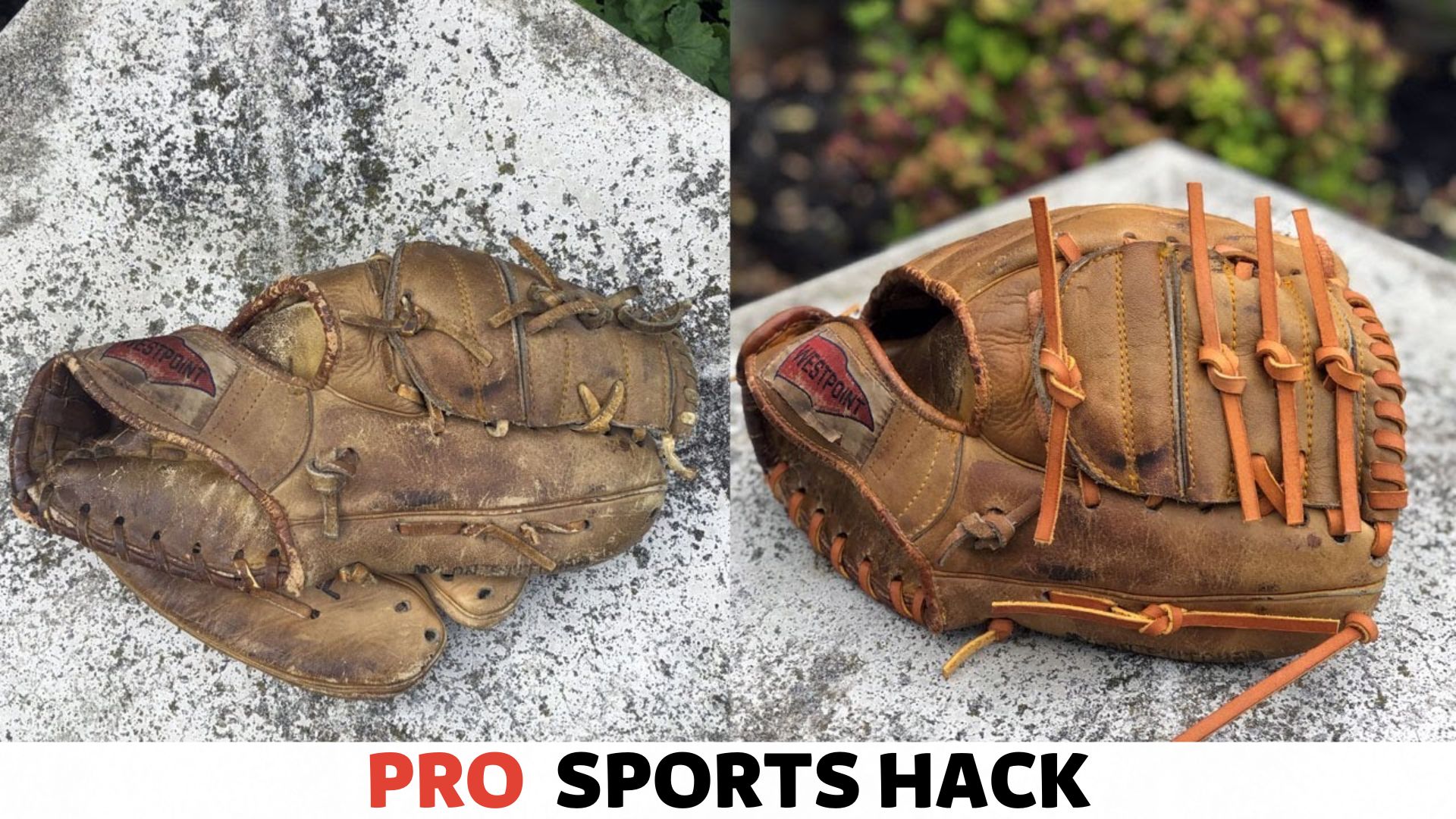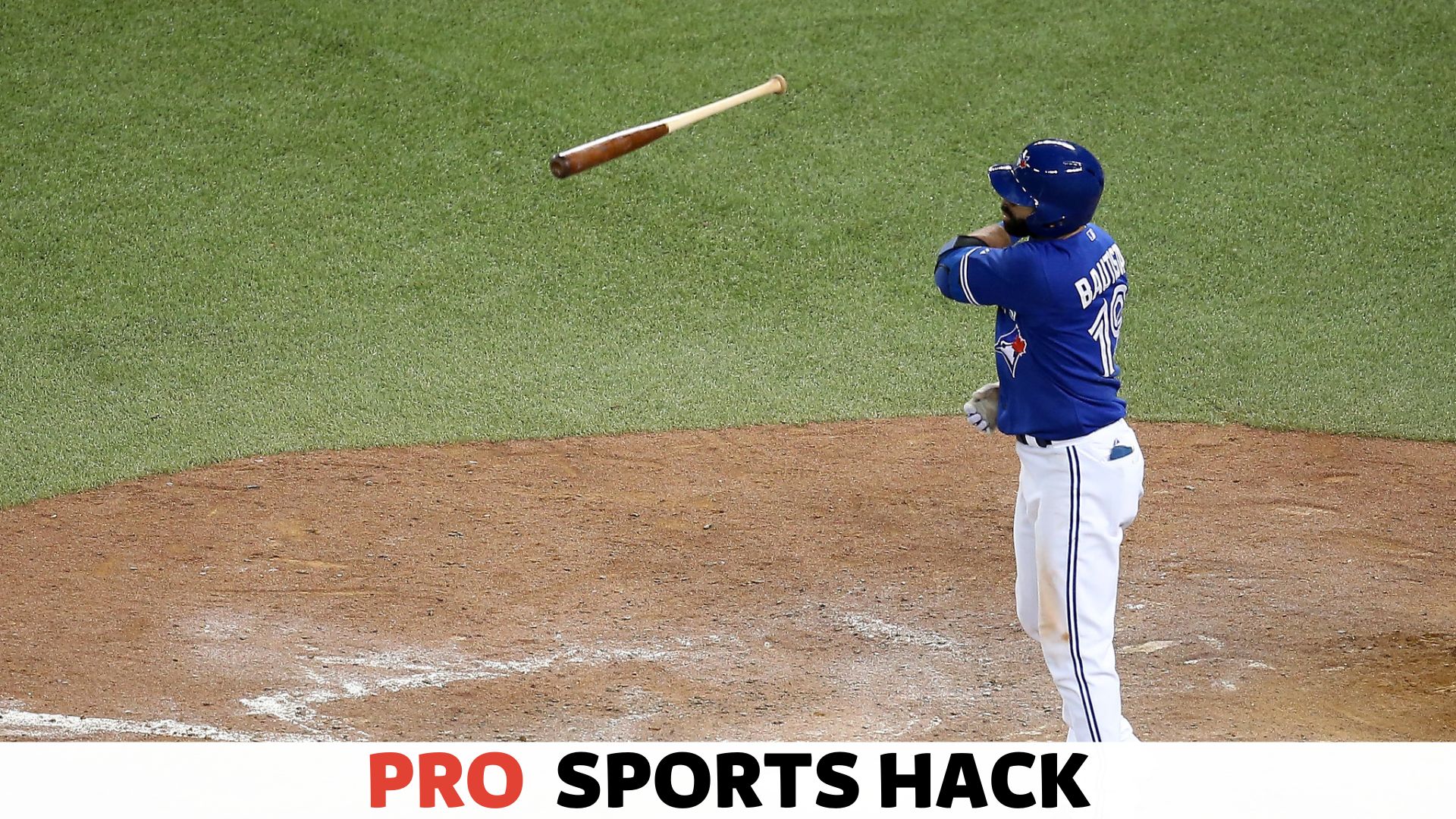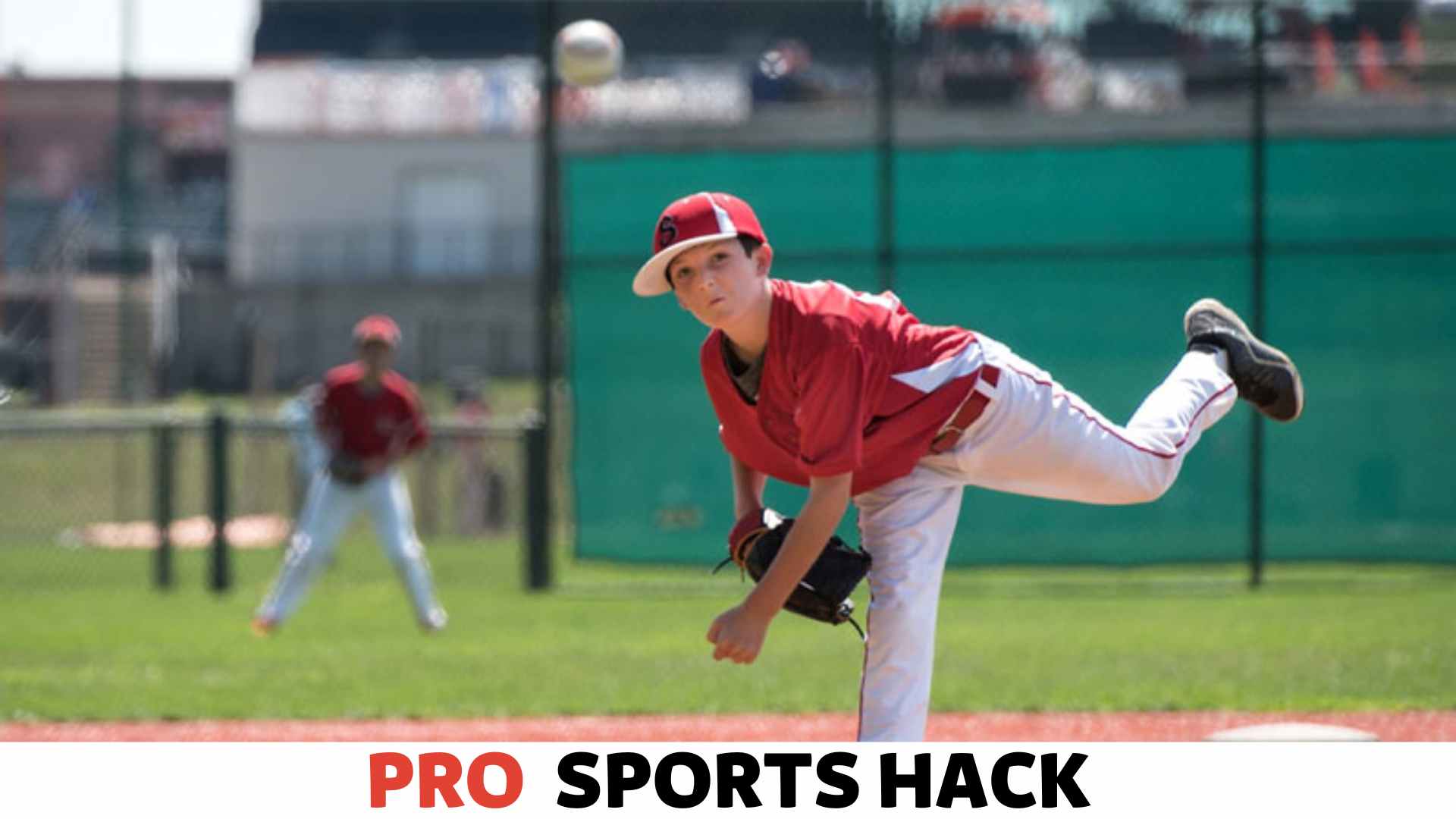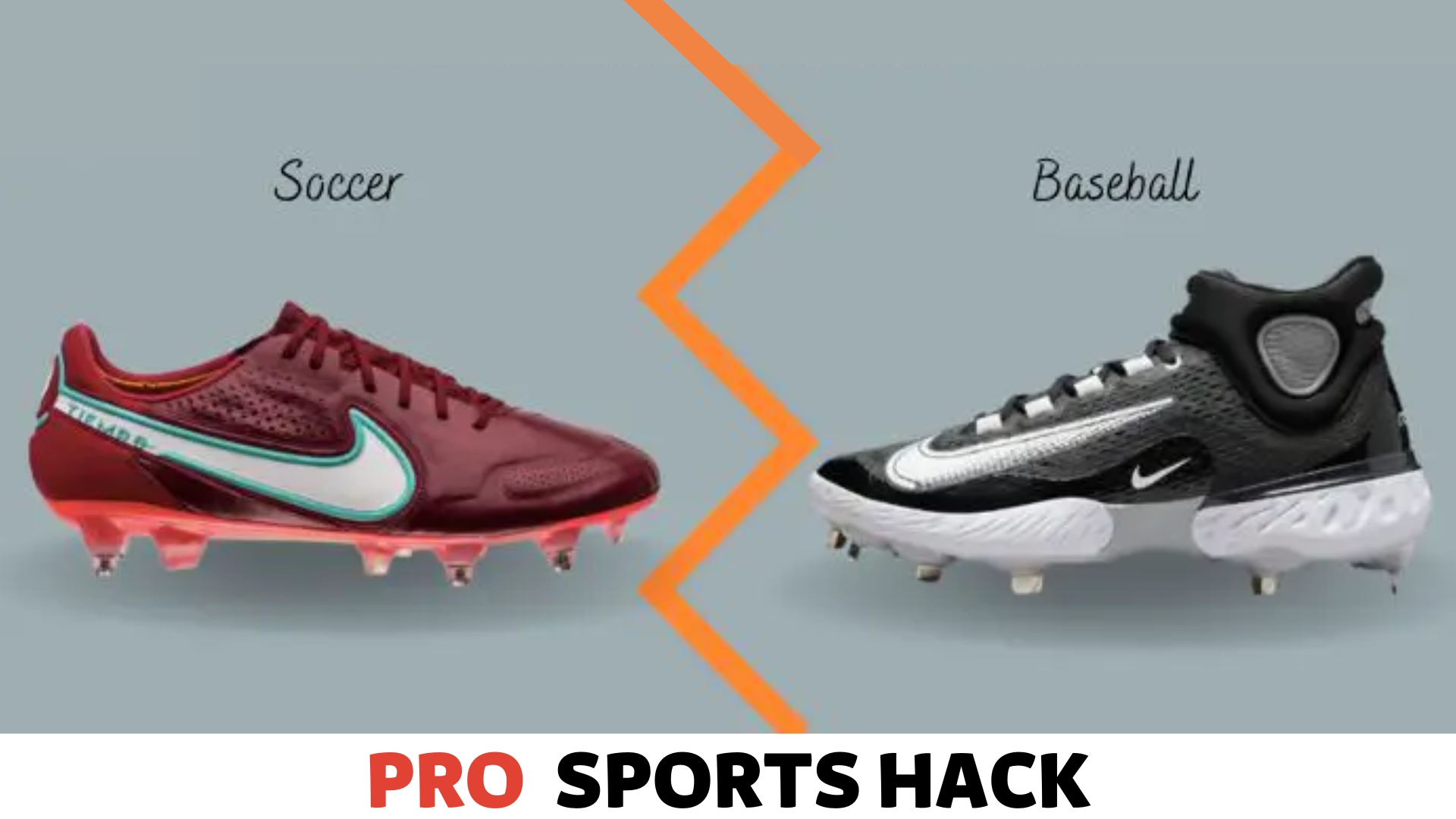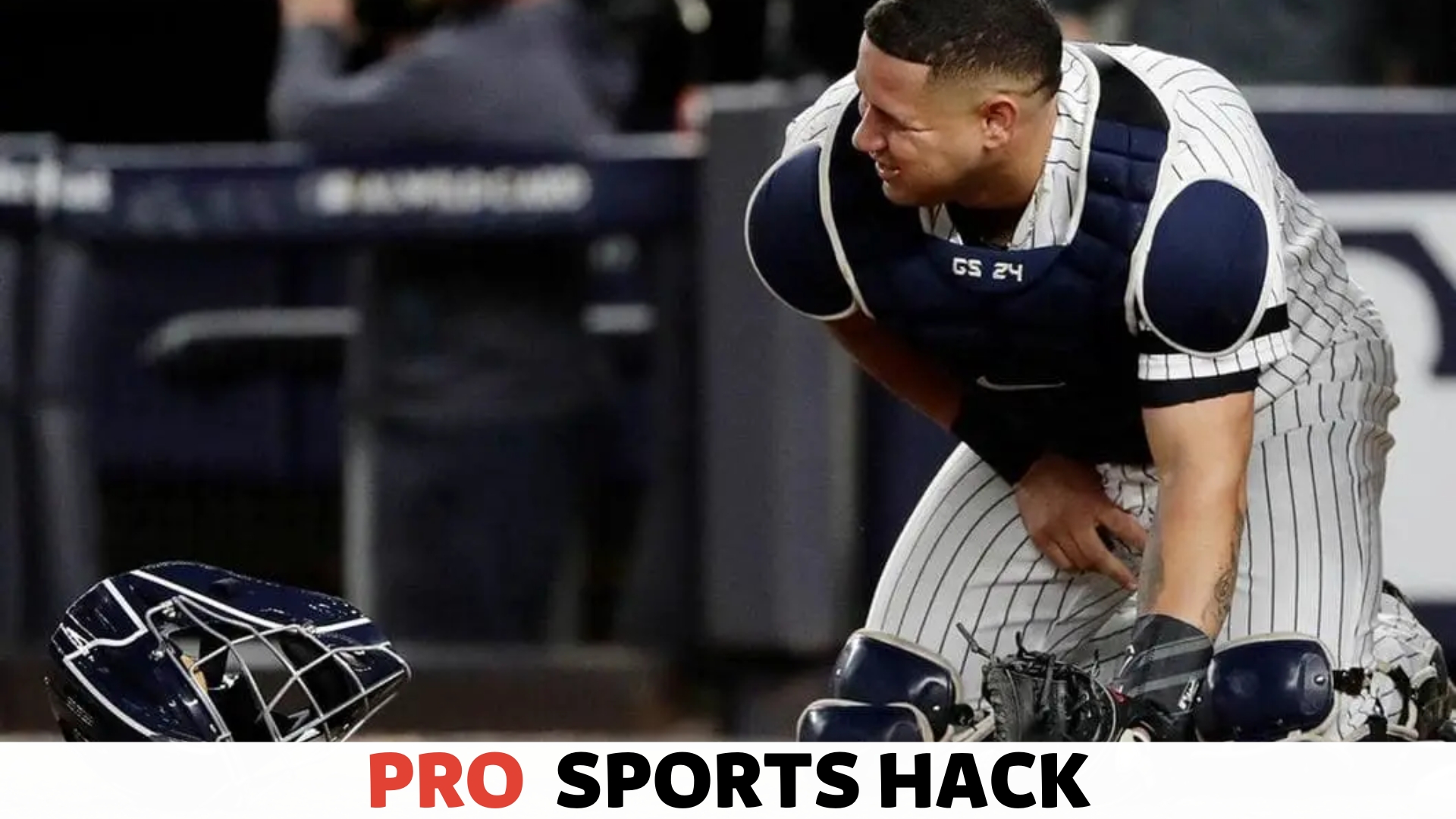
Baseball and lacrosse cleats serve different purposes and have distinct features.
Key Differences Between Baseball And Lacrosse Cleats
When choosing the right footwear for your favorite sport, it’s essential to understand that not all cleats are created equal.
Baseball and lacrosse cleats, for example, have distinct design and construction variations, traction and cleat pattern differences, and unique padding and stability features.
Let’s take a closer look at these key differences and help you make an informed decision for your on-field performance.
Design and Construction Variations
One of the primary differences between baseball and lacrosse cleats is their design and construction. Baseball cleats are designed with a traditional low-top silhouette and a snug fit to enhance ankle mobility and support.
On the other hand, lacrosse cleats typically feature a mid-top or high-top design that offers additional ankle support and stability to withstand the game’s fast-paced nature.
Moreover, baseball cleats are often crafted with leather or synthetic uppers for a lightweight and durable feel. They also have reinforced toe caps to protect against impacts during slides and dives.
In contrast, lacrosse cleats are built with mesh or synthetic materials to offer breathability and flexibility, ensuring optimal maneuverability on the field.
While discussing the choice between baseball and lacrosse cleats, it’s important to address common queries like, “Can youth wear baseball cleats for football?” to guide parents and players in making the right footwear decisions for various sports.
Traction and Cleat Pattern Differences
When it comes to traction and cleat patterns, baseball and lacrosse cleats have their unique specifications. Baseball cleats are designed with metal or molded cleats, offering excellent grip and traction on grass or dirt surfaces.
The metal cleats provide exceptional traction, especially on wet or muddy fields, while molded cleats offer versatility and can be used on various playing surfaces.
Lacrosse cleats, on the other hand, typically feature rubber or molded studs that are strategically placed to provide multidirectional traction.
These cleats are designed to adapt to the fast and multidirectional movements required in lacrosse, offering superior grip and stability on natural and artificial turf.
Padding and Stability Features
Another significant difference between baseball and lacrosse cleats lies in their padding and stability features.
Baseball cleats often come with extra padding and cushioning around the collar and tongue to provide added comfort and support during long hours on the diamond.
Some models may also feature a built-in ankle support system to minimize the risk of injuries.
Lacrosse cleats, on the other hand, prioritize stability and lateral support. They often have a reinforced shoe collar and midsole construction to offer enhanced stability during quick changes in direction.
Additionally, some lacrosse cleats feature an internal sock liner that provides a secure and lockdown fit, reducing the likelihood of foot slippage inside the shoe.
In conclusion, understanding the key differences between baseball and lacrosse cleats is crucial in selecting the most suitable footwear for your sport.
Whether you require ankle support and durability for baseball or multidirectional traction and stability for lacrosse, choosing the right cleats can significantly enhance your performance on the field.
Factors to Consider When Choosing Between Baseball and Lacrosse Cleats
When choosing the right footwear for your sport, it’s important to consider the specific factors impacting your performance and safety.
In the case of baseball and lacrosse, both sports require specialized cleats to ensure optimal traction, support, and movement on the field.
Understanding the differences between baseball and lacrosse cleats will help you make an informed decision. Here are three key factors to consider:
Playing Surface: Turf, Grass, or Asphalt
The playing surface is a crucial element to consider when selecting cleats. Baseball is typically played on grass or turf, while lacrosse can be played on various surfaces, including grass, turf, and asphalt.
The type of surface you frequently play on will determine the appropriate cleat type for your sport.
Baseball cleats usually have metal or molded studs that dig into the ground to provide superior traction on grass, allowing for quick acceleration and turning ability.
On the other hand, lacrosse cleats are designed with shorter rubber studs to provide traction on both grass and turf surfaces. Some lacrosse cleats have flat soles to prevent the studs from digging into artificial turf.
For those who play on asphalt, a dedicated pair of lacrosse cleats with hard rubber or synthetic soles would be the best choice to withstand the abrasive nature of the surface.
Ankle Support and Injury Prevention
Ankle injuries are common in baseball and lacrosse due to the fast-paced and multidirectional movements involved. The level of ankle support offered by cleats varies between the two sports.
Baseball cleats typically provide more ankle support to protect against sprains and twists during sudden changes in direction or while running bases. These cleats often feature a higher collar or ankle strap for added stability.
Lacrosse cleats, on the other hand, prioritize agility and range of motion. They are designed with a low-cut profile to allow for quick footwork and swift movements required in the sport.
While they may not offer as much ankle support as baseball cleats, lacrosse cleats still provide adequate protection and stability for the demands of the game.
Specific Movement Patterns in Each Sport
Each sport has its own unique movement patterns that can influence your choice of cleats.
In baseball, players need efficient lateral movements for fielding ground balls and chasing down fly balls. Thus, baseball cleats often have a wider outsole to stabilize during lateral movements.
Lacrosse, on the other hand, requires frequent and rapid changes in direction, as well as explosive bursts of speed. Cleats designed for lacrosse are lightweight and flexible, facilitating quick cuts, dodges, and sprints on the field.
Baseball Cleats: Features, Benefits, and Considerations
When it comes to baseball, having the right footwear is crucial for performance and safety on the field. Baseball cleats are specially designed to provide players with traction, stability, and support while running, sliding, and quick direction changes.
In this section, we will explore baseball cleats’ features, benefits, and considerations, including the pros and cons of metal vs molded cleats, the use of lightweight materials for enhanced speed, and customization options for optimizing performance.
Metal vs Molded Cleats: Pros and Cons
One of the most significant decisions when choosing baseball cleats is between metal and molded cleats. Both options have their own merits and considerations that players should be aware of:
| Pros of Metal Cleats | Cons of Metal Cleats |
|---|---|
| Superior traction on grass and dirt surfaces Ability to dig into the ground for quick starts and stops | Not allowed in some youth leagues or certain tournaments Can pose a risk of injury to other players May wear down quickly on hard surfaces |
Molded cleats, on the other hand, offer their own set of advantages and disadvantages:
| Pros of Molded Cleats | Cons of Molded Cleats |
|---|---|
| Often allowed in all leagues and tournaments Durable and long-lasting on different surfaces Less expensive compared to metal cleats | May not provide as much traction as metal cleats Can be less stable on wet or slippery fields |
Lightweight Materials for Enhanced Speed
In baseball, speed is crucial, and the right cleats can make a difference. Many baseball cleats are now made using lightweight materials that promote swiftness on the field. These materials include:
- Synthetic Leather: Provides durability and flexibility while reducing weight
- Mesh Fabric: Enhances breathability to keep the feet cool during long games
- Microfiber: Offers a lightweight feel while providing support and stability
Using these lightweight materials to construct baseball cleats allows players to move quickly and agilely across the field, enhancing their overall performance.
Customization Options for Performance Optimization
Baseball cleats also offer customization options that allow players to optimize their performance based on their specific needs and preferences. These options can include:
- Lacing Systems: Different lacing systems provide varying levels of support and stability
- Removable Insoles: Allow players to modify the cushioning and support in the cleats
- Interchangeable Cleats: Some cleats allow for the interchangeability of cleat types for different field conditions
By utilizing these customization options, players can fine-tune their cleats to suit their playing style, field conditions, and personal preferences, ultimately optimizing their performance on the diamond.
In our exploration of the differences between baseball and lacrosse cleats, we’ll also delve into related questions such as, “Can softball cleats be used for soccer?” shedding light on the versatility of athletic footwear and helping athletes choose the most suitable option for their needs.
Lacrosse Cleats: Features, Benefits, and Considerations
When finding the perfect footwear for your lacrosse game, investing in lacrosse cleats is a smart choice.
Designed specifically for the unique demands of lacrosse, these cleats offer a range of features, benefits, and considerations that can enhance your performance on the field.
From high ankle support and protection to durability for intense field conditions and enhanced agility and lateral movement support, lacrosse cleats are essential for any lacrosse player.
High Ankle Support and Protection
One of the standout features of lacrosse cleats is their high ankle support and protection. As lacrosse is a physical and high-intensity sport, the risk of ankle injuries is not uncommon.
Lacrosse cleats are designed with a higher collar that extends above the ankle to provide additional stability and support.
This feature helps to prevent ankle rolls and sprains, giving you the confidence to make quick cuts and changes in direction during the game.
Durability for Intense Field Conditions
Lacrosse is played in various fields, from wet and muddy to dry and dusty. Therefore, it is important to have cleats that can withstand these intense conditions.
Lacrosse cleats are built to be durable and resilient, utilizing materials resistant to wear and tear.
The outsole of lacrosse cleats is often made from tough rubber or synthetic materials that provide excellent traction and grip on various terrains.
This durability ensures that your cleats will last season after season, even with frequent use on rough playing surfaces.
Enhanced Agility and Lateral Movement Support
In lacrosse, agility and quick lateral movements are essential skills, allowing players to navigate on the field with precision and speed.
Lacrosse cleats are designed to support these movements, providing enhanced agility and lateral movement support. The cleats feature a lightweight construction that allows quick movements without weighing you down.
Additionally, the outsole pattern is designed to optimize traction and grip, providing the necessary stability for quick cuts and changes in direction.
When choosing lacrosse cleats, it is important to consider these features and benefits to ensure you find the perfect pair that suits your playing style and needs.
Focus on high ankle support and protection, durability for intense field conditions, and enhanced agility and lateral movement support when selecting your lacrosse cleats, and get ready to take your game to the next level.
Ensuring Optimal Fit and Comfort
When it comes to sports, having the right footwear is crucial for performance enhancement, and the same goes for baseball and lacrosse. In both sports, players need excellent traction, stability, and support cleats.
However, there are slight differences when it comes to baseball cleats versus lacrosse cleats, especially in terms of fit and comfort.
In this section, we will discuss three important factors to consider when selecting the perfect cleats: proper sizing for performance enhancement, breathability and moisture management, and taking the break-in period into account.
Proper Sizing for Performance Enhancement
One of the key factors to consider when choosing cleats is the proper sizing. Both baseball and lacrosse require quick movements such as running, jumping, and changing directions frequently.
To perform at their best, players need cleats that fit them perfectly. Ill-fitting cleats can hinder performance and increase the risk of injuries.
When selecting baseball or lacrosse cleats, measuring your feet accurately and considering the manufacturer’s sizing chart is recommended.
Generally, it is advisable to go for a snug fit that provides enough room for toe movement. Avoid either too tight or loose cleats, as they can cause discomfort and affect performance.
Breathability and Moisture Management
Another vital aspect to consider is the breathability and moisture management features of the cleats. During intense gameplay or practice sessions, players can sweat profusely, leading to hot and uncomfortable feet.
To combat this, it is important to choose cleats that promote breathability and effectively manage moisture.
Modern baseball and lacrosse cleats often feature materials with moisture-wicking properties, allowing sweat to evaporate quickly and keeping the feet dry.
Look for cleats with mesh panels or perforations that ensure proper ventilation, keeping your feet cool and comfortable throughout the game.
Taking Break-in Period into Account
Lastly, when choosing cleats for baseball or lacrosse, it is essential to consider the break-in period. New cleats tend to be stiff and can cause discomfort during use. However, they gradually conform to the foot shape with time, providing a customized fit.
Allowing yourself enough time to break in your cleats before an important game or competition is crucial. This will help you avoid unnecessary blisters or discomfort hindering your performance.
Plan ahead and dedicate some practice sessions or light workouts to break in your cleats properly.
To summarize, ensuring optimal fit and comfort in baseball and lacrosse cleats can significantly impact a player’s performance on the field.
By considering proper sizing, breathability, moisture management, and the break-in period, players can maximize their comfort, reduce the risk of injuries, and ultimately focus on the game.
Maintenance and Care Tips for Baseball and Lacrosse Cleats
Proper maintenance and care of your baseball and lacrosse cleats ensures their longevity and optimal performance.
By following these cleaning, drying, replacement, and storage guidelines, you can extend the lifespan of your cleats and maximize their traction on the field.
Cleaning and Drying Techniques
Regular cleaning is crucial to keep your baseball and lacrosse cleats in top condition. Here are some effective techniques to clean and remove dirt and grime from your cleats:
- Remove excess dirt or debris from the cleats using a soft brush or cloth.
- Use a mild soap or detergent mixed with warm water to scrub the surface of the cleats gently. Avoid harsh chemicals or abrasive cleaners, as they can damage the material.
- Rinse the cleats thoroughly with clean water to remove any soap residue.
- Wipe the cleats with a soft cloth or let them air dry naturally. Avoid direct heat sources like radiators or dryers, as high temperatures can warp or shrink the materials.
By following these cleaning techniques regularly, you can maintain the appearance and functionality of your baseball and lacrosse cleats.
Cleat Replacement Guidelines
As with any sports equipment, baseball and lacrosse cleats will experience wear and tear over time. Knowing when to replace them is crucial to prevent injuries and maintain optimal performance. Here are some guidelines to follow:
- Monitor the condition of the cleat’s outsole. If you notice significant wear, loss of traction, or damage to the studs, it’s time to consider a replacement.
- Check the integrity of the upper material. If there are visible tears, cracks, or excessive stretching, it’s a sign that the cleats have reached their lifespan and should be replaced.
- Pay attention to any discomfort or pain while wearing the cleats. If you experience consistent discomfort or notice changes in your performance, it may be a sign that the cleats no longer provide adequate support and cushioning.
By regularly inspecting your cleats and recognizing the signs of wear, you can proactively replace them and avoid potential injuries on the field.
Storage Recommendations for Longevity
Proper storage of your baseball and lacrosse cleats is essential to maintain their quality and extend their lifespan. Follow these storage recommendations:
- After each use, clean the cleats following the aforementioned cleaning techniques.
- Avoid storing the cleats in extreme temperatures or direct sunlight, as this can cause the materials to deteriorate.
- Store the cleats in a cool, dry place to prevent mold or mildew growth.
- Consider using a shoe bag or a designated cleat storage case to protect them from dust, moisture, and other potential damage.
By storing your cleats properly, you can ensure their longevity and readiness for the next game.
Cost Considerations: Baseball vs. Lacrosse Cleats
When it comes to choosing the right cleats for your sporting activities, cost is an important factor to consider. Whether you’re a baseball player or a lacrosse enthusiast, finding the right cleats that fit your budget and provide the necessary performance is crucial.
In this section, we’ll explore the cost considerations when comparing baseball and lacrosse cleats, including the average price range for quality cleats, various pricing factors, and how to determine long-term investment and value for money.
Average Price Range for Quality Cleats
When searching for quality cleats, it’s essential to have a general idea of the average price range for each sport. Baseball cleats typically range from $50 to $150, depending on the brand, materials, and additional features.
On the other hand, lacrosse cleats tend to be slightly more affordable, with an average price range of $40 to $120.
However, it’s important to note that these are rough estimates, and prices can vary based on brand reputation and market demand.
Pricing Factors and Brand Variations
The pricing of cleats can vary significantly based on different factors and brand variations. Some important pricing factors include the manufacturing materials, design technology, and brand reputation.
For instance, cleats made from premium leather or synthetic materials tend to have a higher price tag than those made from cheaper materials.
Similarly, cleats with advanced features such as enhanced traction and cushioning systems often come with a higher cost.
Brand variations also play a role in pricing, as established and reputable brands tend to have higher prices compared to lesser-known brands.
Long-Term Investment and Value for Money
When evaluating the cost considerations of baseball and lacrosse cleats, it’s essential to think about long-term investment and value for money.
Baseball cleats, being slightly more expensive on average, offer durability and performance that can withstand the demands of the sport, making them a worthwhile investment for serious players.
Lacrosse cleats, while usually more affordable, still provide excellent value for money, as they offer the necessary support and comfort required for the game.
In conclusion, cost considerations are crucial when choosing between baseball and lacrosse cleats. Assessing the average price range for quality cleats, considering pricing factors and brand variations, and evaluating long-term investment and value for money will help you make an informed decision that fits your budget and sporting needs.
In the broader context of athletic footwear, we’ll touch upon the question, “Do baseball players wear cleats?” to emphasize the significance of proper footwear choices in sports and how it impacts performance, offering insights for both players and enthusiasts.
Testimonials: Players’ Perspectives on Baseball and Lacrosse Cleats
When choosing the right footwear for sports like baseball and lacrosse, there is no one-size-fits-all solution.
Each player has their preferences and requirements, making it essential to consider testimonials from those who have experienced playing in both baseball and lacrosse cleats.
In this section, we present insights from professional athletes, recreational players, and equipment experts to help you decide which cleats to choose.
Professional Athlete Interviews
Who better to provide insights on the performance and effectiveness of baseball and lacrosse cleats than the professionals who rely on them daily? We had the opportunity to interview some renowned athletes from both sports, and they shared their experiences and preferences when it comes to footwear.
- John Anderson, a professional baseball player, emphasized the importance of traction and stability while running bases and making quick pivots. He found baseball cleats with metal studs to offer superior grip, especially on wet grass.
- Lisa Johnson, a lacrosse player, highlighted the significance of flexibility and maneuverability on the field. She preferred lacrosse cleats with rubber molded soleplates, giving her the agility to change direction swiftly.
Recreational Player Experiences
While professional athletes offer valuable insights, recreational players’ experiences provide a broader view of the overall cleat performance for everyday athletes.
We had the opportunity to gather feedback from amateur baseball and lacrosse players, seeking their opinions on different cleat options available.
- Mark Davis, a baseball enthusiast, praised the comfort and durability of his baseball cleats. According to him, having proper arch support and cushioning allowed him to play longer and with reduced fatigue.
- Sarah Peterson, an amateur lacrosse player, shared her positive experience with lacrosse cleats designed for wide feet. She noted that the extra width gave her a more secure fit, allowing her to perform at her best without discomfort.
Insights from Equipment Experts
Equipment experts are crucial in helping athletes make informed decisions about their gear. We consulted with sports equipment specialists with extensive knowledge and experience in the field.
According to Dr. Michael Stevens, a renowned sports physician, the design of baseball cleats with metal studs prevents slipping. It ensures traction, which is vital for maintaining balance during sharp turns and sudden changes in direction.
A sports footwear specialist, Emily Thompson, emphasized the significance of breathability of lacrosse cleats. She explained that the mesh and lightweight materials used in these cleats allow for proper ventilation, reducing foot sweat and preventing discomfort during long hours of play.
Whether a professional athlete or a recreational player, gathering insights from various perspectives can help you decide between baseball and lacrosse cleats.
So, consider the experiences of those who have tried both and consult with equipment experts to find the cleats that suit your needs.
Frequently Asked Questions
Can I Use Baseball Cleats for Lacrosse?
No, baseball cleats are not suitable for lacrosse.
Are Lacrosse Cleats Different?
Yes, lacrosse cleats are different from regular cleats due to specific features for traction and agility.
Can I Wear Softball Cleats for Lacrosse?
No, softball cleats are unsuitable for lacrosse due to the different traction requirements and playing surfaces.
What Cleats Do Lacrosse Players Wear?
Lacrosse players typically wear cleats designed for outdoor sports with good traction on turf or grass.
Are Baseball Cleats Different From Lacrosse Cleats?
Baseball cleats and lacrosse cleats are designed differently based on the specific needs and demands of each sport.
Conclusion
Based on the comparison of baseball and lacrosse cleats, it is clear that both sports have specific requirements for footwear.
While baseball cleats focus on providing traction and stability on dirt and grass surfaces, lacrosse cleats prioritize flexibility and agility on turf and grass fields.
Understanding the differences between these two types of cleats is crucial for athletes to optimize their performance and reduce the risk of injuries.
When choosing between baseball and lacrosse cleats, considering factors such as playing surface, ankle support, comfort, and personal preference is vital.
It is also important to take into account the position played, as each sport and position may have unique requirements. Ultimately, finding the right pair of cleats can greatly enhance an athlete’s game and overall experience on the field.
By considering the specific needs of each sport and individual player, athletes can make informed decisions and make the most of their athletic abilities.
So, whether you’re playing baseball or lacrosse, prioritizing the right cleats will undoubtedly give you the edge you need.




![Cat in the Chrysalis Spoiler: All You Need To Know [Updated] Cat in the Chrysalis Spoiler](https://prosportshack.com/wp-content/uploads/2024/02/Cat-in-the-Chrysalis-Spoiler-100x75.jpg)







